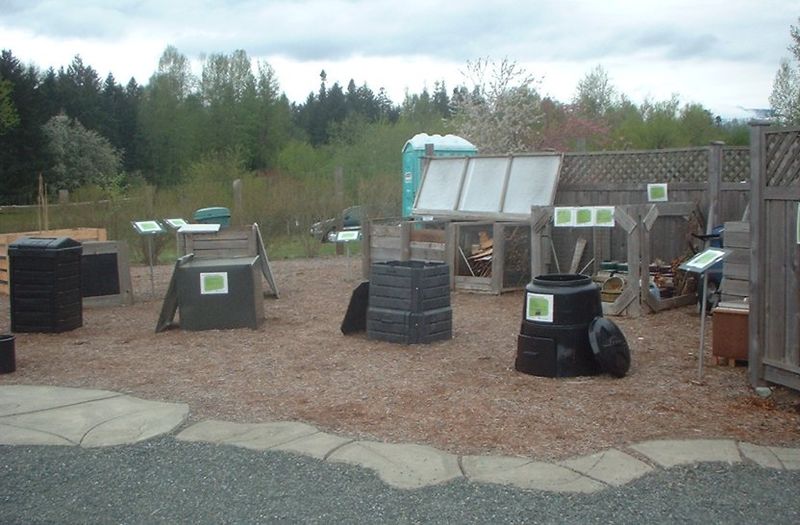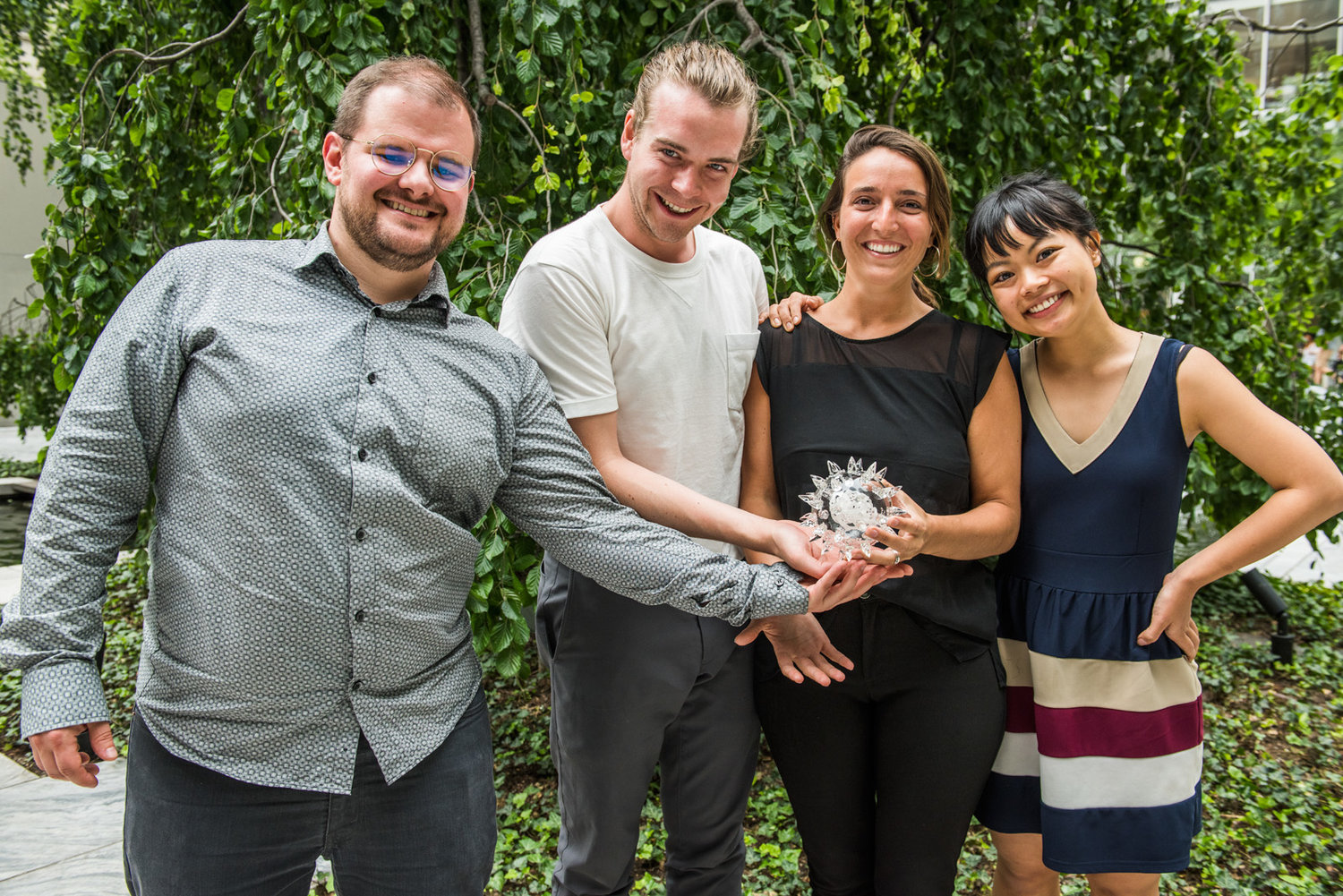|
|
|
January 2nd, 2018 by Miki Saxon
Writing is funny; sometimes a second writing allows you to incorporate new ideas and reasoning. Other times, however, you find that what was written years ago is still valid and only needs a bit of minor editing.
When I poke around the more than 4000 posts I’ve written I’m bound to find some that are embarrassing, but I also find others with information as useful now as when it was written.
Golden Oldies is a collection of the most relevant and timeless posts during that time.
When I decided to write 2018’s first post about leadership I realized that I had already said what I wanted to say nearly eight years ago in a two-part post.
Here they are.
Read other Golden Oldies here.
Leadership Is Fertilizer
 To thrive in today’s world companies need to constantly innovate; innovation requires initiative; initiative is another word for leadership. To thrive in today’s world companies need to constantly innovate; innovation requires initiative; initiative is another word for leadership.
Because initiative and leadership are synonymous, leadership needs to be pushed out of the corner office and spread throughout the organization.
Doing so will encourage growth, creativity and innovation.
If leadership is the fertilizer then culture is the water, without which nothing will grow, and people are the seeds from which ideas come.
By spreading leadership evenly through out your company garden and watering regularly, leaving no area unfertilized or dry patches in which a seed are stunted or die, you assure yourself a bountiful harvest that will be the envy of your competitors.
Composted Leadership
 Fertilizer is created in a lab. with scientists controlling which chemicals are used and in what amount. The formula is then mass produced a factory. Fertilizer is created in a lab. with scientists controlling which chemicals are used and in what amount. The formula is then mass produced a factory.
Anyone who gardens knows that there are a multitude of brands that produce different fertilizers, some considered “general purpose,” but most with specific formulas to accomplish specific goals, including forcing growth.
Experts say compost is a better choice.
Compost is natural, produced when multiple kinds of organic matter are brought together and left to decompose with the aid of a variety of organisms.
The result is an incredibly rich material that produces sustainable results without damaging the environment.
Leadership is similar.
You have the kind that is produced in colleges and MBA programs, learned in a sterile environment, with ingredients that parallel the thinking of selected experts’ mindsets and attitudes.
Thus, the student is indoctrinated in a set of specifics and is often prejudiced against anything that falls outside those boundaries.
Leadership learned through doing—taking the initiative and accepting the risk of failure—is different. It combines a variety of experiences, good, bad and indifferent, and adds a variety of organisms in the form of the varied humans that populate the organization.
The effect of those organisms on the experiences of individual initiative produces a deeper, richer, more flexible form of leadership.
Chemical fertilizer needs to be applied again and again as it wears out.
Compost mixes with and enriches the soil itself, so that the more you add the better the growth medium.
In which do you want to plant your people?
Image credit: Oregon State University
Tags: compost, creativity, fertilizer, initiative, MBA
Posted in Culture, Leadership, Personal Growth |
No Comments »
Sphere: Related Content
*/?>
August 28th, 2009 by Miki Saxon
After considering my recent views on compost as it applies to leadership and culture I want to add another for you to ponder this weekend.
It’s extremely short and I hope you will add your thoughts to my idea.
 Life is compost. Life is compost.
You are the composting machine.
From birth to death a myriad of learning and experiences come your way.
The end result is a rich mixture of ideas, attitudes and actions and even a bit of wisdom if the worms and bacteria are especially effective.
Your comments—priceless
Don’t miss a post, subscribe via RSS or EMAIL
Image credit: Bruce McAdam on Wikipedia Commons
Tags: compost, experience, fertilizer, wisdom
Posted in About Leadership, Change, Personal Development |
3 Comments »
Sphere: Related Content
*/?>
August 26th, 2009 by Miki Saxon

Click to see a guaranteed loss for all of us
Your comments—priceless
Don’t miss a post, subscribe via RSS or EMAIL
Image credit: Red58bill on Wikipedia
Tags: compost, fertilizer, Wordless Wednesday
Posted in Culture, Wordless Wednesday |
No Comments »
Sphere: Related Content
*/?>
August 25th, 2009 by Miki Saxon
Last Monday I said that leadership was another word for initiative and that meant it had to be spread like fertilizer to every level and person if the company wanted to thrive.
 Tuesday I followed up saying that leadership fertilizer was better composted than taught. Tuesday I followed up saying that leadership fertilizer was better composted than taught.
That thinking made me realize that the best cultures are also composted.
Cultural development follows a Y-shaped path.
Initially, the raw ingredients from the top person’s MAP (mindset, attitude, philosophy™) form the basic building blocks of the culture.
At that point the culture moves along one of two divergent routes—one akin to the controlled manufacturing approach of synthetic fertilizer and the other to composting.
Bosses who opt for the former build out the company’s (or their organization’s) culture with little-to-no input from others. They define it, shape it and present the whole as a set piece that is unlikely to change unless they do the changing.
Bosses who opt for the latter use the basic blocks to create a framework that encourages ideas from all levels and positions within the company. The framework acts as a composter with the ideas being processed by various people. One of the most prominent examples of a composting culture was the development of ROWE at Best Buy.
Manufactured cultures have little flexibility, are limited to their creator’s world-view and often defeat initiative and the spread of leadership; even those that are positive are slower, less empowering, and less welcoming to initiative.
Composted cultures are enabling; they encourage people to have initiative, take risks, step out of their comfort zone, grow, and, above all, think—all without worrying that they will be stomped for doing so.
Manufactured culture makes bosses feel safe; they are non-threatening and within their comfort zone.
Composted culture takes bosses out of their comfort zones, often challenges their world-view and shakes up their MAP—not for the faint-of-heart.
Are you a manufacturer or a composter?
Your comments—priceless
Don’t miss a post, subscribe via RSS or EMAIL
Image credit: ZedBee|Zoë Power on flickr
Tags: compost, control, good culture, initiative, MAP (mindset attitude philosophy)
Posted in Culture, Ducks In A Row |
No Comments »
Sphere: Related Content
*/?>
August 18th, 2009 by Miki Saxon
Continuing with more thoughts on yesterday’s post Leadership Is Fertilizer.
 Fertilizer is produced in a lab with scientists controlling which chemicals in what amount are used and then mass produce that particular formula in a factory. Fertilizer is produced in a lab with scientists controlling which chemicals in what amount are used and then mass produce that particular formula in a factory.
Anyone who gardens knows that there are a multitude of brands that produce different fertilizers, some considered “general purpose,” but most with specific formulas to accomplish specific goals, including forcing growth.
Experts say compost is a better choice.
Compost is natural, produced when multiple kinds of organic matter are brought together and left to decompose with the aid of a variety of organisms. The result is an incredibly rich material that produces sustainable results without damaging the environment.
Leadership is similar.
You have the kind that is produced in colleges and MBA programs, learned in a sterile environment, with ingredients that parallel the thinking of selected experts’ mindsets and attitudes. Thus, the student is indoctrinated in a set of specifics and is often prejudiced against anything that falls outside those boundaries.
Leadership learned through doing—taking the initiative and accepting the risk of failure—is different. It combines a variety of experiences, good, bad and indifferent and adds a variety of organisms in the form of the varied humans that populate the organization. The effect of those organisms on the experiences of individual initiative produces a deeper, richer, more flexible form of leadership.
Chemical fertilizer needs to be applied again and again as it wears out.
Compost mixes with and enriches the soil itself, so that the more you add the better the growth medium.
In which do you want to plant your people?
Your comments—priceless
Don’t miss a post, subscribe via RSS or EMAIL
Image credit: ZedBee|Zoë Power on flickr
Tags: compost, creativity, fertilizer, initiative, MBA, professional growth
Posted in About Leadership, Culture, Ducks In A Row, Innovation |
6 Comments »
Sphere: Related Content
*/?>
February 3rd, 2020 by Miki Saxon
Poking through 11+ years of posts I find information that’s as useful now as when it was written.
Golden Oldies is a collection of the most relevant and timeless posts during that time.
Surprisingly, it is Millennials who are giving a lot of thought to dying and, in doing so, changing the conversations around it. All I can say is, it’s about time!” I get it. They are dedicated to directing how they live, want to control how they exit and are far more pragmatic about it than previous generations. I’m no Millennial, but over the decades I’ve given a lot of thought to the subject, too.
Read other Golden Oldies here.
What do you think about when you take stock of your life? What do you strive for? What makes you feel successful?
But first…
What I’m about to write is NOT a judgment call—having been brought up in a judgmental family I don’t judge. Sure, I have opinions, we all do, but I don’t judge. The most I can say is “X doesn’t work for me, but Y does.”
Granted, I might recommend Y; I might even argue passionately regarding the merits of Y, but in the end it’s your decision and you need to tweak/modify/change Y to fit your MAP—if you decide you have any interest in it at all—because Y is a product of my MAP and no two MAPs are identical.
Back to taking stock.
Someone once said to me,
“I still have more than half my life left to live… Still, with each birthday I feel the anxiety of wondering if I am living up to my potential. … Often, I can’t wake up from my daydreams of a disciplined and directed life long enough to make that life happen. … I have learned from experience that I need both [self awareness and willingness to change] if I want to be successful in life and leadership.”
I found it sad because the focus seemed to be so personally judgmental and the person set such store on an intangible like ‘leadership’—which, to have any real meaning, needs to be bestowed and substantiated by others.
But that is just me.
I’m substantially older than most of you and have bounced and blundered through life opening doors as the mood moved me.
I’ve made and lost money as well as friends as our lives diverged.
I once read that success is found in what you do for others, but I believe it’s also in what you don’t do and based on both I am enormously successful.
I’ve given a helping hand to hundreds, thus facilitating their ultimate success.
More importantly, I work hard at not hurting anyone by word or deed, advertently or inadvertently.
I doubt that I’m always successful, but I do try like hell.
I do not lie, cheat or steal.
If I were to have a tombstone (which I won’t, since I’m being composted, which is much better than cremation) it would look like this.

Image credit: JJ Chandler (site no longer exists)
Tags: judgement, judgemental, success
Posted in Personal Growth |
No Comments »
Sphere: Related Content
*/?>
July 23rd, 2018 by Miki Saxon

Poking through 11+ years of posts I find information that’s as useful now as when it was written.
Golden Oldies is a collection of the most relevant and timeless posts during that time.
I was reminded of this post Friday when KG shared some thoughts about leadership. The standard saying, “there is no ‘I’ in team” is all too true, but changing a lowercase ‘i’ to uppercase can often alter a word’s meaning substantially.
Read other Golden Oldies here.
If you truly want a culture of innovation, then you also need to create a culture of leadership.
Last week I commented that if the ‘i’ in leadership is capitalized it changes leadership to leadershIt.
Whereas leadership can be a great motivator, leadershIt is a guaranteed demotivator.
Visions and other leadership functions done with an eye to self-aggrandizement aren’t likely to resonate whether done by positional leaders, leaders in the instance or those who aspire.
Last year I wrote
Because initiative and leadership are synonymous, leadership needs to be pushed out of the corner office and spread throughout the organization; doing so will encourage growth, creativity and innovation.
If leadership is the fertilizer then culture is the water, without which nothing will grow, and people are the seeds from which ideas come.
By spreading leadership evenly through out your company garden and watering regularly, leaving no unfertilized or dry patches in which a seed will be stunted or die, you assure yourself a bountiful harvest that will be the envy of your competitors.
Two follow-up posts have more on this topic here and here.
This isn’t a new idea, just a new way of phrasing it; Lao Tzu said it best 4000 years ago, “To lead the people walk behind them.”
The one thing that remains constant in all these discussions is that you always have a choice—this time it’s between leadership and leadershIt.
Image credit; Martin Cathrae
Tags: culture of innovation, demotivate, lao tzu, leader, leadershIt, motivate
Posted in Culture, Golden Oldies, Leadership |
No Comments »
Sphere: Related Content
*/?>
July 13th, 2018 by Miki Saxon

A Friday series exploring Startups and the people who make them go. Read all If the Shoe Fits posts here.
Invent: Create or design (something that has not existed before); be the originator of.
Inovate: Make changes in something established, especially by introducing new methods, ideas, or products.
If you look carefully there is very little actual invention going on these days, it’s mostly innovation, based on previous products.
However, sometimes innovation is radical enough that it should count as invention.
Consider the lowly toilet.
The Gates Foundation has been funding the effort to reinvent the toilet.
In 2011, the Gates Foundation launched the Reinvent the Toilet Challenge to bring sustainable sanitation and hygiene solutions to the 2.5 billion people worldwide who do not have such access. The challenge, which is ongoing, is a global call to researchers around the world to develop innovative and financially profitable systems to manage human waste. The systems must operate off-grid, cost less than $.05 per day, and function in poor, urban settings.
Even corporate giants got into the effort.
Kohler—a leading U.S. manufacturer of toilets (…) received a Gates grant in 2014, describes these toilets as “stand-alone units that take in wastewater, then disinfect and purify it to be reused for toilet flushing.”
But water is also a scarce commodity, even when it’s reused.
Now, from a group of students at the University of British Columbia, comes the MYCOmmunity Toilet.
The MYCOmmunity Toilet consists of a mycelium tank that is small enough to sit inside each individual dwelling. (…) when it’s full, the toilet is buried in the ground or left somewhere out of the way for another 30 days to allow the composting process–aided by the mushroom spores–to finish. Each toilet includes local seeds, which can be planted on top of the toilet, allowing plants or crops to grow from the human waste.
Although it was designed specifically with refugee camps in mind, it would seem to have far greater potential.
The MYCOmmunity Toilet qualifies as an invention — with the potential to truly change the world.
Image credit: 2018 Biodesign Challenge
Tags: Bill gates, change the world, disruptive innovation, radical innovation
Posted in Entrepreneurs, If the Shoe Fits, Innovation, Role Models |
No Comments »
Sphere: Related Content
*/?>
October 17th, 2014 by Miki Saxon
A Friday series exploring Startups and the people who make them go. Read all If the Shoe Fits posts here
 In an interview Robert Herjavec said, In an interview Robert Herjavec said,
If you can’t inspire the people around you, you are going to fail. If you can’t inspire the people around you, you should go sell real-estate, because that is probably one of the only businesses where you could make a lot of money working completely on your own. But I think if you want to build a great business, you’ve got to bring other people along, and nobody wants to be managed. People want to be led.
His comment reminded me of a post from a few years ago that I believe is worth repeating.
Ducks in a Row: Leadership or LeadershIt?
If you truly want a culture of innovation, then you also need to create a culture of leadership.
Last week I commented that if the ‘i’ in leadership is capitalized it changes leadership to leadershIt.
Whereas leadership can be a great motivator, leadershIt is a guaranteed demotivator.
Visions and other leadership functions done with an eye to self-aggrandizement aren’t likely to resonate whether done by positional leaders, leaders in the instance or those who aspire.
Last year I wrote
Because initiative and leadership are synonymous, leadership needs to be pushed out of the corner office and spread throughout the organization; doing so will encourage growth, creativity and innovation.
If leadership is the fertilizer then culture is the water, without which nothing will grow, and people are the seeds from which ideas come.
By spreading leadership evenly through out your company garden and watering regularly, leaving no unfertilized or dry patches in which a seed will be stunted or die, you assure yourself a bountiful harvest that will be the envy of your competitors. (Two follow-up posts have more on this topic here and here.)
This isn’t a new idea, just a new way of phrasing it; Lao Tzu said it best 4000 years ago, “To lead the people walk behind them.”
The one thing that remains constant in all these discussions is that you always have a choice—this time it’s between leadership and leadershIt.
Image credit: HikingArtist
Tags: lao tzu, leadagers, leader, manage
Posted in Culture, Leadership |
No Comments »
Sphere: Related Content
*/?>
June 2nd, 2012 by Miki Saxon
Dan McCarthy, along with Jim Stroup and Wally Bock, are of the rare breed that write on leadership, but don’t see it as an elitist function, genetic gift or an ability defined, let alone guaranteed, by position or promotion.
Tuesday Dan wrote one of the funniest (and shortest) posts I’ve seen in quite awhile—and turned me green with envy.
The post was truly “ripped from the headlines” and I offer it in full with Dan’s gracious permission.
Come on now, how hard can it be to be a great leader? It seems the bar keeps getting lower and lower every day.
All you need to do is browse the headlines and you’ll easily come up with examples of what not to do as a leader. Just follow these hopefully easy to adhere to rules, do a reasonable good job, and you’ll be running your organization in no time:
1. Don’t drop too many F-bombs at work. Or, as far as I’m concerned, don’t drop them at all.
2. But even if your employee does, don’t fire your employee over the phone. F2f is the only option for canning an employee.
3. Don’t slap your employees. Two words: anger management.
4. Don’t hit on or party with your employees. Some may argue with this one, but I’d say you’re only asking for trouble.
5. Don’t upstage your boss. It’s always better to let your boss go first.
6. Don’t launch an IPO and get married in the same week. It’s all about focus.
7. Don’t fire an employee for being “too hot”. Or for being too ugly. But you can for a dress code violation. But not over the phone, see #2.
8. Don’t flirt with the jurors during your corruption trial. I’d file this one under the competency of “judgment”.
9. Don’t lie about your education (let’s hear it for New Hampshire!). Or about your ethnicity (Hey, if I’m going to mention NH, I couldn’t spare Massachusetts). Better yet, just don’t lie, period. It’s easier to remember things when you don’t make them up.
10. Don’t steal your company’s money. Or “borrow” it, or “misplace” it, or whatever.
Last, but not least – and I’m sorry to have to mention this in a family leadership blog – don’t ever, ever, have sex at work, under any circumstances. Asking “was that wrong?” will not save you from being fired.
Hope you enjoyed this tour of leadership ineptitude headlines. Anything you’d like to add to the list? By the time this post is published, I’m sure we can come up with 11 more.
Seeing as how four days have gone by since publication I’m sure there are far more than 11.
To make it interesting, add your own link and comment for a chance to win a copy of Claudio Feser’s Serial Innovators. Winner chosen by random drawing.
Tags: accountability, consequences, ethical, leader
Posted in Expand Your Mind, Leadership |
No Comments »
Sphere: Related Content
*/?>
|
 Subscribe to
Subscribe to
MAPping Company Success
About Miki 
Clarify your exec summary, website, etc.
Have a quick question or just want to chat? Feel free to write or call me at 360.335.8054
The 12 Ingredients of a Fillable Req
CheatSheet for InterviewERS
CheatSheet for InterviewEEs™
Give your mind a rest. Here are 4 quick ways to get rid of kinks, break a logjam or juice your creativity!
Creative mousing
Bubblewrap!
Animal innovation
Brain teaser
The latest disaster is here at home; donate to the East Coast recovery efforts now!
Text REDCROSS to 90999 to make a $10 donation or call 00.733.2767. $10 really really does make a difference and you'll never miss it.
And always donate what you can whenever you can
The following accept cash and in-kind donations: Doctors Without Borders, UNICEF, Red Cross, World Food Program, Save the Children
*/
?>About Miki
About KG
Clarify your exec summary, website, marketing collateral, etc.
Have a question or just want to chat @ no cost? Feel free to write
Download useful assistance now.
Entrepreneurs face difficulties that are hard for most people to imagine, let alone understand. You can find anonymous help and connections that do understand at 7 cups of tea.
Crises never end.
$10 really does make a difference and you’ll never miss it,
while $10 a month has exponential power.
Always donate what you can whenever you can.
The following accept cash and in-kind donations:
|
 To thrive in today’s world companies need to constantly innovate; innovation requires initiative; initiative is another word for leadership.
To thrive in today’s world companies need to constantly innovate; innovation requires initiative; initiative is another word for leadership. Fertilizer is created in a lab. with scientists controlling which chemicals are used and in what amount. The formula is then mass produced a factory.
Fertilizer is created in a lab. with scientists controlling which chemicals are used and in what amount. The formula is then mass produced a factory.



 Life is compost.
Life is compost.
 Tuesday I followed up saying that leadership fertilizer was
Tuesday I followed up saying that leadership fertilizer was 


 In an interview
In an interview 
